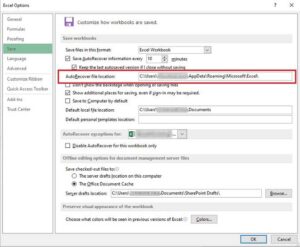Technology
How AI is Making Slideshow and Video Creation Accessible for Everyone

In today’s digital age, creating visually appealing slideshows and videos has become an essential skill for personal, professional, and marketing purposes. However, traditional slideshow and video creation methods often require a steep learning curve, technical expertise, or significant time investment. This is where artificial intelligence (AI) has stepped in to revolutionize the process, making slideshow and video creation accessible to everyone, regardless of skill level.
AI-powered tools simplify every aspect of content creation, from designing layouts and transitions to generating polished results. In this article, we will explore how AI technology has made slideshow and video creation more accessible, with a focus on features, benefits, and practical applications. We’ll also highlight the role of AI slideshow generators and video apps in transforming the way users create content.
The Rise of AI in Content Creation
Artificial intelligence has made remarkable advancements in automating complex processes, and content creation is no exception. AI tools can now analyze raw data, understand user inputs, and suggest improvements to enhance the quality of output. This technology is particularly impactful in the realm of slideshows and videos, where creative decisions like transitions, timing, and design once required significant manual effort.
One of the key ways AI is transforming content creation is through AI slideshow generators, which allow users to create professional slideshows with minimal effort. Instead of spending hours arranging images, applying transitions, and syncing music, AI-powered tools take over these tasks. With just a few clicks, users can generate polished slideshows that are ready for presentations, social media, or marketing campaigns.
Additionally, It’s influence extends to mobile platforms through video apps, which bring advanced editing capabilities directly to users’ smartphones. These apps are designed to simplify video creation on the go, enabling users to quickly create engaging videos or slideshows without the need for professional software or equipment.
Features of AI-Powered Slideshow Generators
AI slideshow generators are designed to eliminate the complexities of traditional slideshow creation. Here are some of the key features that make these tools a game-changer:
-
Automated Design Suggestions:
It analyzes the content you upload, such as images, text, or videos, and suggests layouts, color schemes, and transitions that best fit the theme of your project.
-
Template Variety:
Most AI-powered tools come with a library of templates for different purposes, including business presentations, weddings, and social media content.
-
Smart Transitions and Animations:
It optimizes the flow of the slideshow by automatically applying smooth transitions and animations between slides.
-
Audio Integration:
Adding background music or voiceovers is simplified, as AI tools can sync audio with the visuals to ensure seamless playback.
-
Time-Saving Automation:
Tasks that traditionally take hours, such as cropping images, aligning text, and arranging elements, are automated by AI, saving users significant time.
If you’re looking to try one of these tools, consider an AI slideshow generator that allows you to quickly create high-quality slideshows without requiring technical skills. Whether you’re designing a presentation for work or a slideshow for a personal event, AI-powered tools can handle the heavy lifting for you.
Benefits of Using AI in Video and Slideshow Creation
The integration of AI into video and slideshow creation offers several benefits, including:
-
Ease of Use:
AI tools are designed to be user-friendly, making them ideal for beginners who may not have experience with complex editing software.
-
Cost-Effectiveness:
By automating time-consuming tasks, It reduces the need for hiring professional designers or investing in expensive software.
-
Speed:
AI-powered platforms can generate a polished slideshow or video in minutes, making them ideal for projects with tight deadlines.
-
Customization Options:
Despite the automation, users can still personalize their projects by tweaking colors, fonts, and layouts to align with their vision.
-
Consistency:
It ensures that all design elements are cohesive, resulting in a professional look that would otherwise require significant effort to achieve manually.
For users who prefer mobile solutions, several video apps integrate AI technology to provide similar benefits on a smaller screen. Apps like this one make it easy to create high-quality videos and slideshows directly from your phone, offering flexibility and convenience.
Practical Applications of AI in Slideshow and Video Creation
AI-powered slideshow generators and video apps are versatile tools that can be used across various industries and personal projects. Here are some common applications:
-
Marketing Campaigns:
Businesses can use artificial intelligence tools to create engaging promotional videos, product showcases, or social media content that captures attention and drives conversions.
-
Educational Content:
Teachers and educators can generate visually appealing presentations or explainer videos to simplify complex topics for their students.
-
Event Highlights:
Personal events like weddings, birthdays, or anniversaries can be captured and celebrated with beautiful slideshows created effortlessly using artificial intelligence.
-
Corporate Presentations:
Professionals can rely on artificial intelligence slideshow generators to create polished presentations that convey their ideas clearly and effectively.
-
Social Media Content:
AI video apps make it easy for content creators to produce videos tailored for platforms like Instagram, YouTube, or TikTok, complete with optimized aspect ratios and effects.
By leveraging tools like an AI slideshow generator, users can quickly create tailored content for any of these purposes. Meanwhile, mobile video apps enable users to edit and produce content while on the go, further expanding the range of possibilities.
How AI-Powered Video Apps Are Transforming Mobile Content Creation
With the widespread use of smartphones, mobile video apps have become an essential tool for content creators, marketers, and everyday users. These apps leverage it to bring desktop-level editing capabilities to handheld devices, making it possible to create professional-grade videos from anywhere.
Some of the key features of AI-powered video apps include:
-
Voice Recognition:
It can transcribe voiceovers or add subtitles automatically, making videos more accessible to a wider audience.
-
AI-Powered Editing:
Features like auto-cropping, scene detection, and smart filters simplify the editing process for users.
-
Social Media Optimization:
These apps often come with pre-set templates and aspect ratios for platforms like Instagram, YouTube, and TikTok.
-
Real-Time Previews:
Users can see the impact of their edits immediately, allowing for quick adjustments.
-
Cloud Integration:
Many apps sync with cloud storage, making it easy to access and share projects across devices.
Whether you’re creating videos for personal use or professional purposes, video apps offer the convenience of mobile editing combined with the power of AI, making content creation easier than ever.
Final Thoughts
It has significantly lowered the barriers to entry for slideshow and video creation, empowering users of all skill levels to produce high-quality content quickly and efficiently. Whether you’re creating a slideshow for a personal event or a promotional video for your business, AI-powered tools can help you achieve professional results without requiring extensive time or effort.
From desktop-based AI slideshow generators to mobile video apps, these tools offer unparalleled convenience and flexibility. By automating repetitive tasks, providing smart design suggestions, and enabling customization, It has made slideshow and video creation accessible to everyone.
If you’re ready to simplify your content creation process, try using an AI slideshow generator or explore video apps that bring professional-quality results to your fingertips. With AI on your side, creating stunning slideshows and videos has never been easier.
Technology
How to Repair Corrupt Excel Files?

Sometimes, when trying to access an Excel file won’t open or throws errors. This usually happens due to corruption in the file. Although Microsoft doesn’t offer a manual on MS Excel file corruption, understanding it is not that difficult. However, there are ways to repair and recover a corrupted Excel workbook.
Identifying Corruption in an Excel 2013 File
Sometimes, you may receive a message suggesting corruption in a workbook. But there can be times when you might not even know it has turned corrupt. This can be bad because corruption might worsen if not treated on time, leading to potential data loss.
Thus, keep your eyes open for the following tell-tale signs of Excel corruption:

Errors on File Open
More often than not, if a workbook is corrupted, any attempts to open or access the file will result in errors or warnings such as:
- “Excel cannot open the file <filename>, because the file format or file extension is not valid. Verify that the file has not been corrupted and that the file extension matches the format of the file.”
- “The workbook cannot be opened or repaired by Microsoft Excel because it is corrupt”.
Sudden AutoRecover Warning
The AutoRecover feature of Microsoft Excel acts as a fail-safe. It saves copies of all open Excel files at a fixed interval that the user can define. The files can be recovered if Excel closes unexpectedly.
So, if you come across the AutoRecover warning message “An unexpected error has occurred. Autorecover has been disabled for this session of Excel“, it’s a sign that something has gone wrong.

Your immediate step on seeing any such warning should be to save the workbook. However, a corrupted workbook that’s already loaded in the RAM (opened) cannot be saved intact. When you try to save it, the Office will try to auto-repair the workbook which may cause unprecedented effects like the disappearance of some information.
Unexpected Excel Crash
The most evident sign that there is some problem with the workbook is an unexpected termination of Excel with the message “Microsoft Excel has stopped working…” A sudden Excel crash could occur due to corruption or any other reason such as bugs or problems with VBA code or improper patching of your Office version.
Repairing Corrupt Excel 2013 Files
Following are some ways that can be used to repair Excel 2013 workbook and recover data from it:
- Restore from Backup
It goes without saying that if you have the most recent backup of your Excel file, you can easily restore the file from the backup. But if the backup isn’t available or it isn’t updated, try the next workaround.
Note: Before performing the following workarounds make sure to back up your Excel file.
- Repair Excel File with Open and Repair Utility
When Excel detects a corrupted workbook, it automatically starts ‘File Recovery mode’ and attempts to repair the corrupt Excel 2013 workbook. If this mode doesn’t start, using the built-in ‘Open and Repair’ utility may help fix the corrupted workbook. Here’s how:
- Open Microsoft Excel 2013.
- Click File -> Open.

Open the Corrupted Excel Workbook
- Browse and select the corrupted workbook.

Browse and Select Corrupt Excel File
- Click the arrow next to the Open button in the open dialog box, and then click Open and Repair.

Run the Open and Repair Utility
- Choose Repair to fix corruption in the corrupted workbook.

Repair or Extract Data
If you’re unable to repair the workbook, try recovering data by clicking Extract Data. If this doesn’t work, try recovering data by using the following workarounds.
TIP: If the ‘Open and Repair’ method fails to repair a corrupted Excel workbook, use a professional Excel file repair tool to repair XLS/XLSX files in just few simple steps with precision and maintaining data integrity.
- Restore ‘AutoRecovered’ Excel File
Excel comes with a built-in ‘Auto-recovery’ feature that automatically saves unsaved spreadsheets.
Note: The Excel AutoRecover feature works only for those workbooks that have been saved at least once.
You can try the auto-recovered feature to recover your Excel file data. To do so, follow these steps:
- Open your Microsoft Excel 2013 application.
- Click the File tab from the main menu, and then click Options.

Select Options in Excel 2013
- In the Excel Options dialog box, select Save and copy the AutoRecover file location under ‘Save workbooks’.

Check the Location of the Autorecovered Excel File
- Browse the AutoRecover file location and you will be able to see autosaved versions of the Excel file.
Note: By default, the ‘AutoRecover’ feature is set to ‘Save AutoRecover information every 10 minutes’. You can change the interval and make it less or more than the default time as per your needs.
- Office Document Recovery
The Document Recovery task pane automatically opens when you launch Excel after a sudden crash so you can get your file back. Click the arrow next to the recovered file in the Document Recovery task pane, and choose Open or Save As.
Note: This option might not be available if the workbook has been severely corrupted.
Repair Corrupt Excel 2013 Files by Using Excel File Repair Software
If you fail to repair and recover Excel file by using manual workarounds, Excel repair software from Stellar® can be of great help. It helps scan the damaged XLS/XLSX file. If the file is corrupt, the software repairs it and previews all the components stored in the file. You can then save all the recoverable contents to a blank new Excel workbook.
The Excel file repair tool from Stellar® can fix all types of Excel file corruption errors and restore your data. It is compatible with MS Excel 2019, 2016, 2013, and lower versions. Also, it can help you repair single or multiple XLS/XLSX files simultaneously.
Final Words
This blog outlined how to identify corruption in an Excel 2013 File. It also discusses the different methods to repair and restore Excel files. For repairing corrupt Excel files, you can use an Excel file repair tool. Stellar Repair for Excel is one such tool that helps repair (.XLS/.XLSX) Files and restore the corrupted file to its original form with all the data intact. You can download the free trial version of the software to preview the recoverable Excel data before deciding to activate the licensed version of the software.
Technology
Profit in Motion: How Adaptive Pricing Drives Supply Chain Success

In today’s fast-moving market landscape, dynamic pricing —rapidly adjusting prices in response to demand, competition, or operational costs —is transforming the way manufacturers and distributors do business. This approach not only helps companies to maximize their revenue potential but also ensures they remain agile in the face of changing market conditions. Companies leveraging pricing software for manufacturing can more easily implement and maintain successful dynamic pricing strategies, providing a considerable competitive advantage.
The manufacturing and distribution sectors face unique challenges, including fluctuating raw material costs, intricate supply chains, and evolving customer expectations. Dynamic pricing, backed by robust analytics and technology, enables these companies to fine-tune their pricing models, capitalize on market trends, and respond more quickly to threats and opportunities. As technology and analytics become more accessible, dynamic pricing is no longer just for industry leaders—it’s a critical tool for businesses of every size. Still, implementing dynamic pricing is not without its challenges. Organizations must balance the advantages of agility and increased revenue with the risks of customer pushback, potential regulatory scrutiny, and the operational complexity of real-time price optimization. Companies that succeed are those that combine real-time intelligence with transparent communications, ensuring customers view price shifts as fair and justified.
Understanding how to collect, analyze, and act on pricing data is crucial to maximizing the value of dynamic pricing. By integrating automation, artificial intelligence, and strategic planning, manufacturers and distributors can transform dynamic pricing from a tactical exercise into a long-term growth driver
Understanding Dynamic Pricing
Dynamic pricing is a flexible approach that enables companies to respond rapidly to ever-changing factors, including demand, supply constraints, production costs, and competitor actions. In manufacturing and distribution, this means pricing products not on a fixed schedule, but in real-time, aligning price with value and market realities. This strategy is increasingly critical as customer expectations evolve and global supply chains grow more complex. The shift towards digitalization and data-driven operations gives companies unprecedented control over their pricing models—a trend highlighted by leading industry publications.
Benefits of Dynamic Pricing in Manufacturing and Distribution
- Revenue Optimization: Dynamic pricing enables capturing more value during periods of high demand, while stimulating sales when demand is low. This adaptive approach helps organizations avoid leaving money on the table during market peaks and reduces losses in downturns.
- Inventory Management: Since dynamic pricing can impact buyer behavior, it enables companies to balance inventory levels effectively, thereby minimizing costly overstocks or shortages.
- Competitive Advantage: Businesses that can align their prices to market conditions in real-time are better positioned to outpace competitors and satisfy customers who expect fair, value-based pricing.
Implementing Dynamic Pricing Strategies
Rolling out a successful dynamic pricing program involves several interconnected steps:
- Data Collection & Analysis: Gather detailed data on customer purchasing trends, competitor pricing, inventory status, and input costs. Automated tools and advanced analytics systems can turn massive data sets into actionable insights.
- Automation & AI: Implementing modern, AI-powered pricing tools enables real-time price adjustments. This automation allows companies to respond promptly to shifting market dynamics, ensuring optimal price points are maintained at all times.
- Customer Communication: Clearly and proactively share the reasoning behind pricing shifts, particularly during periods of rapid change. This transparency helps maintain customer trust and loyalty.
- Monitoring & Continuous Adjustment: Dynamic pricing is not a set-it-and-forget-it process. Regularly review performance, market feedback, and customer behavior, making data-driven adjustments to fine-tune pricing models.
Challenges and Considerations
Organizations must navigate several complex issues to ensure dynamic pricing delivers its promised benefits:
- Customer Perception: Widespread or poorly explained price changes can breed mistrust or pushback, especially among long-term partners or high-value customers.
- Ethical Concerns: It’s essential to avoid strategies that exploit necessity or lead to price gouging. Ethical boundaries and fairness must be at the core of any dynamic pricing initiative.
- Regulatory Compliance: Compliance with antitrust laws and anti-discrimination regulations is mandatory, particularly as pricing models grow more advanced and complex.
Case Studies
Real-world examples illustrate the measurable benefits of adopting dynamic pricing strategies:
- Specialty Chemical Company: Implementing a value-based dynamic pricing system, a U.S.-based specialty chemical manufacturer enhanced return on sales by three percentage points within just a year, as noted in research by McKinsey & Company. The company’s data-led approach allowed for smart, targeted price increases that reflected both product value and customer price sensitivity.
- Global Specialties Company: Following several mergers, this company introduced AI-driven analytics solutions to guide its pricing structure and boost profitability, achieving a return on sales improvement within the first year of adoption.
Future Trends in Dynamic Pricing
- AI and Machine Learning Integration: More manufacturers are shifting towards AI-driven systems that continuously analyze variables and provide faster, more accurate price updates, even factoring in variables such as projected raw material shortages or changing consumer demands.
- Sustainability-Linked Pricing: Manufacturers are introducing dynamic models that reward greener practices, like discounts for orders with lower carbon footprints or premium pricing for products with sustainable sourcing. This trend aligns with a larger movement towards ESG values throughout the global supply chain.
Conclusion
Dynamic pricing has emerged as a game-changing strategy for manufacturers and distributors seeking to thrive in a demanding and volatile marketplace. By harnessing the power of analytics, automation, and transparent communication, companies can set prices with confidence, maximizing revenue, managing inventory efficiently, and fostering lasting customer relationships. Addressing challenges related to perception, ethics, and regulation is crucial to fully realizing the promise of dynamic pricing while maintaining trust and compliance in the digital era.
Technology
What to Do When Your Car Battery Dies on the Road
Getting stranded on the side of the road due to a dead car battery can be stressful and inconvenient. Unexpected battery failures often occur at the most inconvenient times, leaving drivers unsure of what steps to take to resolve the issue. Understanding the signs of a weakening battery, such as dimming headlights or slow engine cranking, can help prevent being caught off guard. Being prepared with basic knowledge and safety precautions ensures you can respond calmly and effectively when your vehicle suddenly stops running.
When a battery dies, it’s essential to stay safe and assess your options before attempting any fixes. Many drivers rely on emergency roadside service to handle situations like jump-starts or battery replacements efficiently. These services provide trained assistance and equipment to get your car back on the road quickly, minimizing stress and risk. Taking precautionary measures and knowing who to call can make all the difference during such unexpected moments.
Ensure Safety First
When your car abruptly stops or fails to start due to a dead battery, your immediate concern should always be your personal safety. Move your vehicle out of the flow of traffic if possible, steering towards the shoulder or a well-lit parking lot. Activate your hazard lights promptly to alert passing vehicles to your situation. If it’s necessary to exit the car, only do so when it’s safe and use the door farthest from traffic. Stay behind protective barriers, if available, and maintain a safe distance from passing vehicles.
Diagnose the Issue
Before attempting any fix, confirm that the battery is truly the culprit. Common warning signs include dim or flickering headlights, interior lights that won’t turn on, a persistent clicking sound when turning the key, or total inactivity from electrical components such as the radio or windows. Visual inspection matters too—check the battery terminals for corrosion buildup and ensure the cables are secure. Excessive corrosion can prevent your battery from functioning even if it still holds a charge.
Jump-Starting Your Vehicle
If help is nearby or you have a set of jumper cables along with another vehicle, jump-starting is a practical solution. Here’s how to do it safely and effectively:
- Position both cars close enough that the cables can reach, but ensure they don’t touch each other.
- Switch off both engines, leaving each car in park (or neutral for manual transmissions) and activate the parking brakes.
- Connect one red (positive) clamp to the positive terminal of the dead battery.
- Attach the other red clamp to the positive terminal of the good battery.
- Connect a black (negative) clamp to the negative terminal of the charged battery.
- Connect the other black clamp to an unpainted metal surface or the engine block of the car with the dead battery, keeping it away from the battery itself.
- Start the operational vehicle and let it run for a few minutes.
- Try starting the car with the dead battery. Once it starts, let both vehicles run for five to ten minutes to ensure charging stability.
- Remove the cables in the reverse order, avoiding contact between the clamps as you do so.
Calling for Roadside Assistance
If you’re unable to resolve the issue or lack the tools to try, calling in professional help is the safest and fastest move. Roadside assistance from auto clubs, insurance providers, or dedicated services can deliver both a jump-start and help you arrange towing if needed. When contacting roadside help, have your vehicle’s details and your exact location ready to streamline your service request. Keeping your membership or insurance information accessible will also expedite support.
Using Portable Jump Starters
Portable jump starters have empowered drivers to deal with battery emergencies independently. Before heading out, make sure your jump starter is fully charged. To use, attach the positive and negative clamps as directed by the manufacturer (typically to the battery terminals and an engine block or grounding point). Then, power on the device and attempt to start your engine. Afterward, detach the clamps in reverse order and recharge your jump starter as soon as possible.
Always keep your device manual handy or review the instructions online to ensure you follow the correct sequence for both safety and effectiveness.
Preventive Measures
An ounce of prevention can save a lot of hassle on the road. Make it a point to inspect your battery and its terminals regularly for signs of wear, swelling, or corrosion. Keep all lights and accessories turned off when your car isn’t running to prevent draining. Avoid making repeated short trips that prevent your battery from charging fully. If you’re heading into extreme weather, have your battery’s charge capacity tested, as both intense heat and cold can impact its performance and lifespan.
Most experts recommend considering battery replacement every three to five years to minimize the risk of unexpected failure.
Handling Battery Failure in Remote Areas
Breaking down in a sparsely traveled or remote location can be more stressful and potentially dangerous. Start by assessing whether you have a cell signal to call for help. In areas without coverage, an emergency beacon or satellite communicator can be invaluable for providing a means of communication. Remain with your vehicle—it serves as a visible landmark for rescuers and provides shelter.
Practice energy conservation by limiting the use of electrical devices, and signal distress with a raised hood or brightly colored fabric on your antenna. Keep a basic emergency kit in your vehicle, containing essentials like water, non-perishable snacks, blankets, a flashlight, and a portable phone charger
Conclusion
A dead car battery doesn’t have to ruin your plans or jeopardize your safety. By staying calm, prioritizing safety, and using the right strategies—whether jump-starting yourself, calling for help, or preparing for emergencies—you’ll be able to handle most situations with confidence. Routine vehicle checks and a well-stocked emergency kit will help you stay ahead of trouble and keep your journeys smooth and safe.
-

 Technology8 months ago
Technology8 months agoRevealed: 8093642079 – Find Out Who’s Behind the Number
-

 Business5 months ago
Business5 months agoHow Horseback Adventures Foster Connection and Wellness
-

 Technology11 months ago
Technology11 months agoRaterpoint: Revolutionizing Online Content Evaluation and Feedback
-

 Technology11 months ago
Technology11 months agoDetecting AI-Generated Text: Tips and Techniques
-

 Technology11 months ago
Technology11 months agoFDXMZ24: A Comprehensive Guide
-

 Entertainment11 months ago
Entertainment11 months agoFappelo: How to Engage with This Exciting New Phenomenon
-

 Technology11 months ago
Technology11 months agoPerchance AI | Intelligent AI Solutions for Your Business
-

 Blog11 months ago
Blog11 months agoBunkralbum: What You Need to Know About This Intriguing Concept
